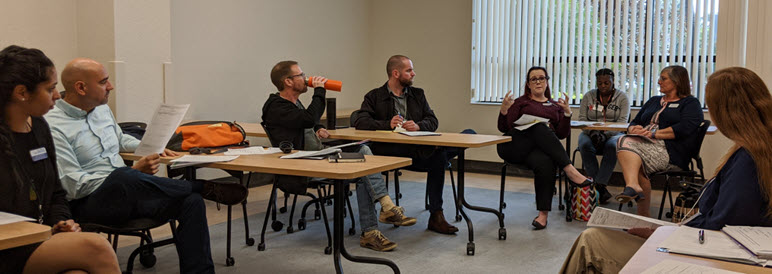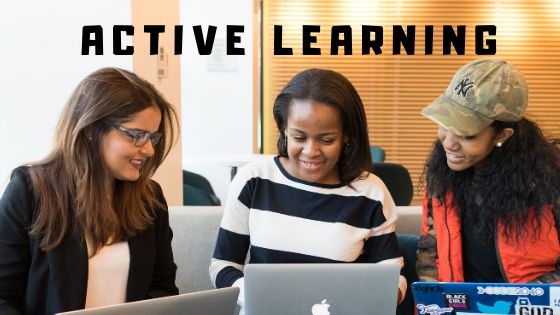Active Learning: Creating Excitement Online
February 17, 2020 / Instructional Design Team / Tags: Active Learning, Online Learning, Online Teaching, Digital Learning, Pedagogy
Recently, the instructional design team facilitated a round table discussion about active learning for the SWFL Teaching and Learning Symposium. The session invited faculty to learn more about what active learning looks like in an online course and talked about ways they are currently using active learning engagement strategies. The conversation resulted in many great ideas for improving the student learning experience in online courses! We know many of our faculty were unable to participate in the round table so we wanted to share some of the ideas with you on our blog.

What is Active Learning?
Active learning is the process in which students engage in activities such as reading, writing, discussion, or problem solving that promote analysis, synthesis, and evaluation of class content. Cooperative learning, problem-based learning, and the use of case methods and simulations are some approaches that promote active learning.
When students are actively engaged, they think deeper about the course content, and enjoy their learning. This can happen through a range of activities: group work, project work, interactive online activities, peer teaching, and so on. Students must be actively participating in and reflecting on the activities to enhance their higher order thinking capabilities.
The key principles of active learning are:
- The task has purpose and relevance to the students.
- The students are able to reflect on the meaning of what they have learned.
- The students can negotiate goals and methods of learning with the teacher.
- The students can critically evaluate different ways and means of learning the content.
- The complexity of the learning tasks is comparable to professional contexts and real life.
- The tasks are situation-driven: that is, the need of the situation is taken into consideration in order to establish the learning tasks.
Have you developed an active online course?
You may be engaging your students through active learning already and don’t even know it! Below are just a few of the many possible activities that can be used to promote active learning in any course.

This spectrum arranges active learning techniques by complexity and classroom time
commitment.
Prepared by Chris O’Neal and Tershia Pinder-Grover, Center for Research on Learning and Teaching, University of Michigan
Other Ideas: Case studies, Role playing, Simulations, Authentic projects, Journaling, Minute Papers, Discussions, Interviews, Podcasts, Labs, Debate, Field Trips (Virtual and In Person), Games, Reading Surveys, Jigsaw, Peer review/feedback, Self-Assessment, Problem Sets, Concept Maps, Exam Wrapper, Short-writing assignments, Think-Pair-Share, Group Work, Project Based Learning (PBL), Social Media, Student as Producers, Synchronous Sessions with Breakout Groups, Experiential Learning (Internships, Practicums, Service-Learning, Study Abroad)
We can help you!
Are you using any of these active learning strategies successfully in your online courses? What are some techniques you would like to use?
The Digital Learning team utilizes the standards developed by Quality Matters to evaluate the quality of online courses at FGCU. The process is a collaborative one, with faculty and designers working together to ensure high quality for courses. One of the standards examined during the process is active learning. We particularly work with you to examine how you plan interaction between students, with the instructor, and with the content. Contact your instructional designer to have a conversation about how active learning can be implemented in your course.
Resources
- Active Learning - Vanderbilt University Center for Teaching
- Active Learning - University of Michigan Center for Research on Learning and Teaching
- Active Learning in an Online Course
- Register to learn more about the FGCU Internal Online Course Quality Review Process at one of our Conversations in the Living Room sessions at the Lucas Center.
